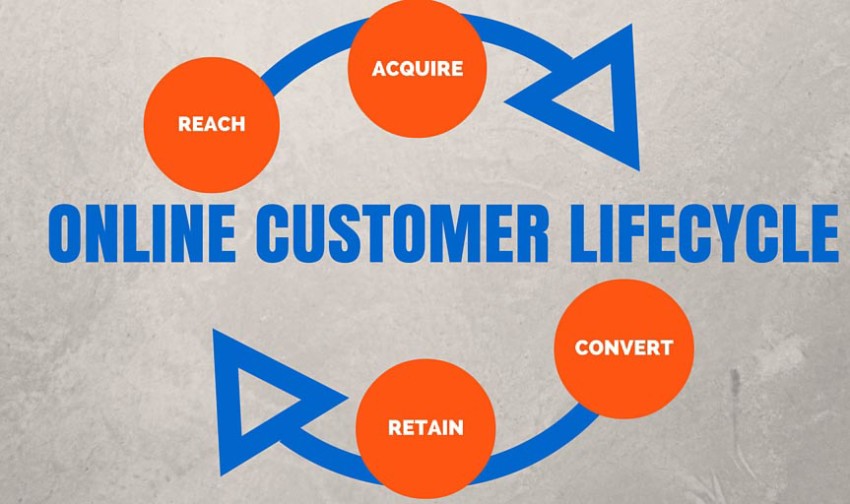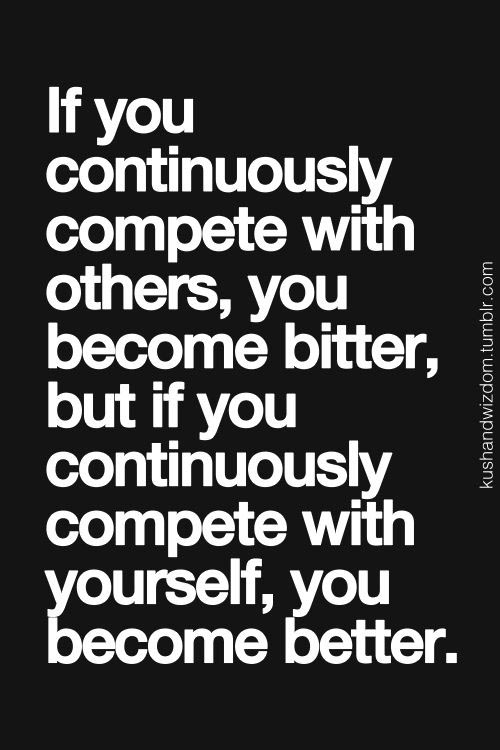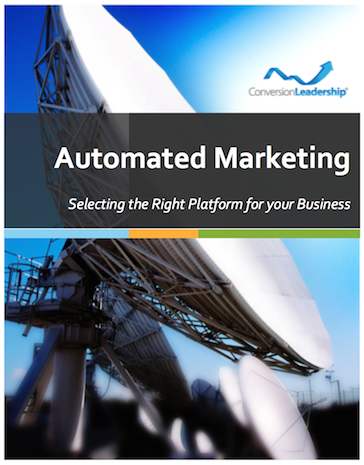The Online Customer Lifecycle

If there were a way of thinking about your website that would make it possible to literally guide your visitors into making a purchase and becoming customers, how would you know?
Understand where in the Online Customer Lifecycle your customers are at any point in time and you will.
A useful customer lifecycle includes metrics to measure Reach, Acquisition, Conversion and Retention. This framework also gives you a business model for understanding the nature of your business in relation to other businesses.

The Value of a Customer Lifecycle Framework
In today's business environment, the trend is for businesses to use both online and offline channels in their marketing plans.
Using broad categories of reach, acquisition, conversion and retention adds clarity to the metrics you measure.
Whereas in the past, marketing managers might simply report that they got 30 percent more visitors who bought 10 percent more widgets.
Now, using a customer life cycle framework to interpret the powerful reports in web analytics solutions, managers can pinpoint the initiatives that brought more visitors or the optimal sales path that increased sales.
When you can identify the marketing activities that succeed and those that don't; fine tuning your marketing activities becomes so much easier.
Defining What To Measure in The Customer Lifecycle
The following are definitions for the metrics in the customer life cycle.
These metrics may be used when you create your Key Performance Indicators, the means for achieving your business goals.
Customer Lifecycle: Reach
Reach is defined as the likelihood of gaining someone's attention. This can be interpreted in a number of ways, depending on how you want to measure and understand business success for your company.
- The number of searches completed for your paid search keyword phrases.
- The number of reads an article written by someone representing your company received.
- The number of users who view banner impressions served on a website.
- The number of subscribers to a newsletter you sponsor or that contains your ad.
- The number of subscriptions to a newspaper or magazine and will see your ad.
- The number of views your billboard ad receives or TV spots secure.
Each of the above can be both easy and difficult to measure.
A banner/display ad network, for example, can tell you how many ad impressions were served or the number of times your search phrases were used. Making monitoring your metrics easy.
Likewise, any magazine or newsletter can tell you how many readers they have. Just as any marketing vendor can tell you how many valid addresses your direct mail piece was sent to.
BUT how would you know how many people read your magazine article or actually received your piece of mail, let alone opened the envelop? This is much harder to monitor and work out ROI.
Even online, Reach can sometimes be difficult to measure. No matter how powerful your web analytics solution, the number of people who actually read and think about your marketing message is always inaccurate at best - and wildly inaccurate at worst.
For that reason, Reach is tied to Acquisition.
Whilst it may not be possible to accurately measure the number of people who read a message, we can infer this value from the percentage of people you are able to acquire - or the number of people visiting your website as a result of reading your message.
So when thinking about Reach, keep in mind that Reach is correlated to the actual Acquisition of visitors.
Customer Lifecycle: Acquisition
If Reach is defined as the likelihood of gaining someone's attention, then Acquisition can be defined as how well you got someone's attention.
Did they make it to your site? Did they click on a link or type your domain in their browser and bring themselves to your site?
That's Acquisition!
To many, Acquisition is measured in terms of a visitor not only arriving, but also engaging in some sort of action, like a purchase, or an opt-in to a newsletter list or contact database.
Acquisition stats are usually focused on your source of website visitors and traffic. This can be -
- the referring domain/website,
- a search engine or
- a search keyword phrase.
Using something like Google Analytics can extend this measurement, allowing for the qualification of visitors. In so doing, it leads to the measurement of Conversion.
Customer Lifecycle: Conversion
Conversion and activities leading to any action you consider to be achieving an intend business outcome should be the raison d'etre for your website and online presence.
Conversion is the successful completion of specific activities by your website visitors that result in a positive contribution to your bottom line.
Conversion can be measured differently for different activities.
Conversion does not have to equal a sale.
It could be -
- downloading a White Paper on "How To Increase You Reach" online for example,
- the act of submitting your contact information to get something valuable,
- searching to find information related to a particular topic such as online lead generation,
- Number of clicks to view pricing information in a given period,
- tracking the specific amount of time spent on individual web pages of your website,
- viewing a specific number of web pages in a single visit to your website,
- viewing key important web pages like your product or service features page, or
- submitting information in a calculator, quote or contact request form.
Studying the sales path to Conversion will help you make changes to your website and influence marketing initiatives that will impact your visitors' ability to complete desired goals.
Which leads to decisions you make about how your website needs to change are informed by real data.
It also means that this a win-win situation because it leads to customer satisfaction and increased profits for your business.
It is important to measure all the Conversion Rates that matter to your business and avoid the temptation to compare your Rates to those of other businesses. Research firms often publish studies about Conversion Rates by business category, and while this information is interesting, its speculative as to whether its a safe way to gauge your own success.

Your measure of success needs to be the increase (or intentional decrease) in your website's Key Performance Indicators over time. If you're seeking to achieve a 3-fold increase in online sales, then establish a baseline and use that as your measure for success.
Select the top three or four KPIs for your website (or marketing campaigns) and measure these over time. Always track progress and make changes that will improve future Conversions.
Customer Lifecycle: Retention
The Reach, Acquisition and Conversion phases in the customer life cycle are designed to get a customer to buy for the very first time. Now you need to concentrate on keeping those customers and encouraging repeat sales.
Research shows that an existing customer is more valuable than a new customer and costs less to sell to than a new prospect.
Since your competitors are but a click away, you need to really focus on creating a relationship that adds value - over and over again.
Remember in business -
- If you sell a product, someone can make it cheaper.
- If you provide a service, someone can always do it better or faster.
Unless your products and services are well branded, top of mind, extensively marketed or very unique, your business will always be subject to aggressive competitors and churn.
Which is why it is important to measure Retention.
Retention measures the activities of your repeat customers, tracking everything they do on your website whether it is a purchase or any other activity. As well as whatever other ways they are engaging with you - through phone calls, emails, social media, TV ads, sales meetings, webinars, retargeting campaigns, billboards, direct mail, all of it.
By watching the individual actions of your repeat customers, you can respond optimally to their needs, then up sell and cross sell products and services that benefit them.
Visitor segmentation technologies are an important aid to understanding your repeat customers and increasingly a vital tool for understanding who precisely are your target market and best customers.

